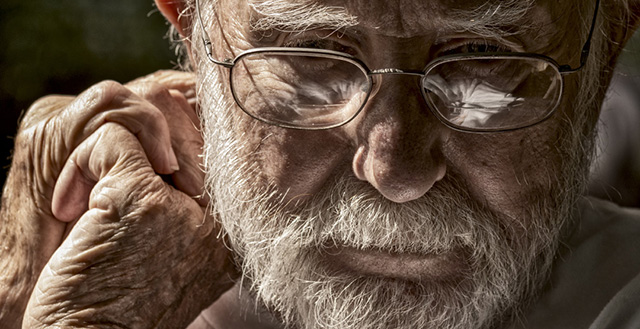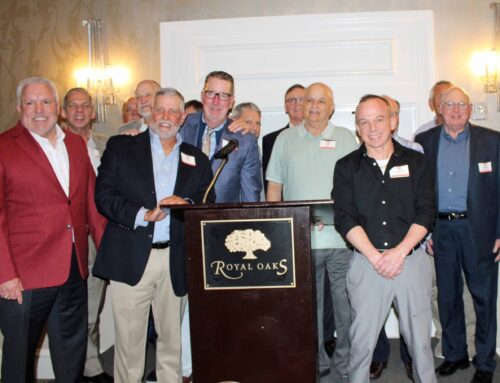George Boyd, 86, caught what he calls “bird photography disease” decades ago at White Rock Lake and has photographed thousands of birds, animals, wildflowers and insects since then. He lives near the lake with his wife, Shirley, and spends most of his spare time going through old photo scrapbooks and digitalizing his pictures.
How did you begin photographing White Rock Lake?
We moved into our house here 50 years ago. We never spent much time at the lake except the occasional picnic or something. A family doctor told me I was much too heavy, and I was burning the candle at both ends. He insisted that I do some kind of exercise. He just kind of pulled something out of thin air, he said, ‘Like running.’ So I started driving to the lake, and I had a mile mark, and I’d run and then the next day I’d go back and run two miles and then got up to four. I started running more and more up at the lake, and when you do crazy things like that, you have to do things to play games with your mind, so I started listening to all the different water birds. I started trying to distinguish what they were and just kind of got interested in them.
In the meantime, Shirley and I went on a trip to Big Bend, and the guy who was our leader, he just knew everything about it. As well as telling everything about the plants and the soil, he was also a birder. He would point out all these different birds, and I realized it was like hunting; it was the same genes that make you want to go hunting with a gun. For years I would go out hunting, and my main interest was just to see what bird I saw. It wasn’t shooting with a gun, it was mostly just looking, and this kind of just grew into wanting to document what was here. The pictures were kind of like trophies.
My youngest son conned me into buying an A1 Canon with a 50 to 100 zoom lens, and I started trying to take pictures with that. Soon I found I needed something better than that. Like most hobbies, it kind of evolved from there.
On Earth Day at the Bath House Cultural Center, they had a two-week showing of the wildlife at White Rock Lake with my pictures, and the North Texas Master Naturalists had a tent set up next door, and they were taking people on wildflower walks. I went on one of those walks, and a man gave me a list of what had been seen down there. I found you could hunt wildflowers just like you can hunt birds or animals.
The next year I had the same thing [a picture showing] about the wildflowers at White Rock Lake. And then butterflies and dragonflies, and what I call critters, you know, lizards or turtles or snakes.
Did you grow up hunting? Where did that come from?
I guess it started when I was a little kid. I don’t remember how old I was when my daddy started taking me out with the shotgun to go rabbit hunting. Of course, that was back when if you shot a rabbit, you ate a rabbit. And I guess it’s like anything you get involved in where there’s a certain amount of competitive spirit.
So, when was the transition from hunting to photography?
I’d been deer hunting in a blind in Colorado some, but I was mostly just interested in the wildlife. I just really enjoyed seeing the wildlife there. The fact that you could photograph it, and the advantage of hunting with a camera is that there’s no closed season on anything. If you shoot it today and don’t like the picture, you can go back and shoot it again.
In the time you’ve been around White Rock Lake, have you seen the wildlife change a lot? Were there things that used to be there that aren’t anymore?
Actually there are a lot of things that you see now that weren’t there before. I remember the first time I saw the white pelicans. I was on the dam early one morning, and I looked out there, and I could not believe what I was seeing. There were about 10 or 12 pelicans. I came home and got Shirley, and we went back out there, and sure enough they were still out there. They’ve been back ever since. Also, now coyotes are more prevalent and bobcats are more prevalent. We’ve gotten mink down there.
How about the monk parakeets?
I was running one evening, and I saw the birds fly over, and I couldn’t identify them, but they were making noise like a parrot would. There was a doctor who walked down there with his dog, and he had a big pair of binoculars. We’d meet almost every morning. I said, ‘Did I see parrots flying over? Am I imagining that?’ He said, ‘Oh no, those are monk parakeets. There’s nine of them and they rest in the superstructure at the electrical company.’ So I went down, and sure enough they were building down there by the power plant. The next year there were a few more, and a few more, and they’re all over this part of town now.
Do you have a favorite photograph?
The red fox I guess is one of my favorites. I was down at the old fish hatchery pond, and I was trying to photograph some little kinglettes — a type of sparrow — and they were just darting around. I saw something move behind the brush. He came out I guess to get a drink of water in the creek. I had the camera on it, and he stuck his head out, and it was a red fox. I snapped a picture. Of course it was a manual camera, so I shot it, and it advanced the camera, and I pushed the button again, and all I had was just the hole; he was gone that fast.
So all the years you’ve been photographing at White Rock Lake, you never get tired of it?
No, I never do. There’s always something new.






